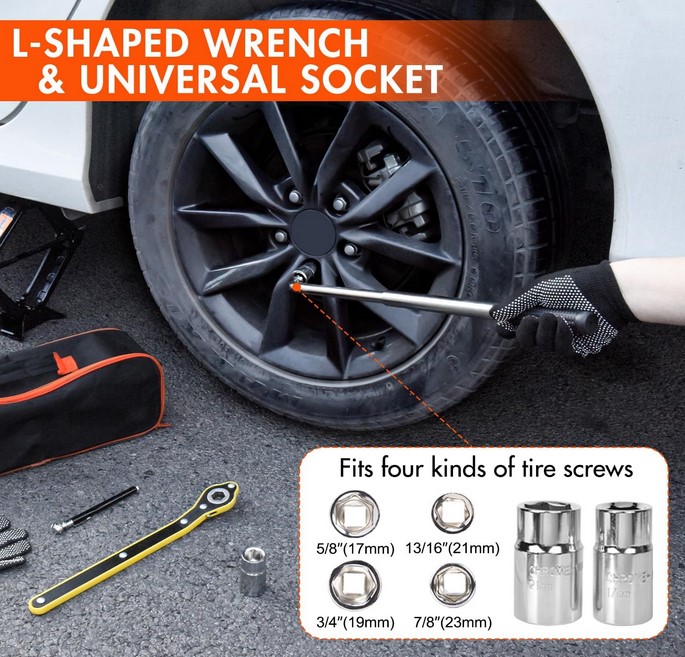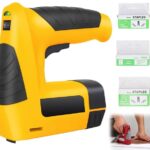Tire changing tools are a set of specialized equipment designed to assist in the process of removing and replacing a flat or damaged tire on a vehicle. These tools are essential for anyone who wants to be prepared for a roadside tire change emergency.
The primary purpose of tire changing tools is to provide the necessary leverage, support, and protection required to safely lift a vehicle off the ground, remove the lug nuts, and swap out the flat tire with a spare. The basic components of a tire changing tool kit typically include a jack, lug wrench, and sometimes additional accessories like wheel chocks, gloves, or a reflective safety triangle.
The jack is the key component, serving as a lifting mechanism to raise the vehicle off the ground, allowing access to the tire. Different types of jacks, such as scissor jacks or hydraulic bottle jacks, are designed to provide the necessary lifting capacity while remaining compact and portable for storage in a vehicle’s trunk or cargo area.
Table of Contents
Importance of Tire Changing Tools
Having the right tire changing tools is crucial for ensuring your safety and convenience on the road. Flat tires can occur unexpectedly, leaving you stranded and vulnerable if you’re not prepared. Carrying a set of reliable tire changing tools allows you to address this common roadside emergency quickly and efficiently, minimizing the disruption to your journey.
Safety is a paramount concern when changing a tire, especially on busy roads or in adverse weather conditions. Proper tire changing tools, such as a sturdy jack and lug wrench, provide the necessary leverage and stability to lift your vehicle securely, reducing the risk of accidents or injuries. Additionally, having the right tools can prevent further damage to your vehicle or tires, which could result in costly repairs.
Convenience is another significant benefit of having tire changing tools readily available. Instead of waiting for roadside assistance or arranging for a tow truck, you can quickly swap out the flat tire and get back on the road, saving you time and potential inconvenience. This is particularly valuable when traveling in remote areas or during late hours when assistance may be harder to obtain.
Efficiency is also a key factor when it comes to tire changes. With the right tools, you can complete the task in a timely manner, minimizing the time spent on the side of the road and reducing the risk of potential hazards. Specialized tools, such as tire irons and bead breakers, can make the process even smoother, especially when dealing with stubborn or stuck tires.
In summary, tire changing tools are essential for addressing roadside emergencies involving flat tires. They prioritize your safety, provide convenience, and ensure efficiency, allowing you to quickly and securely get back on the road and continue your journey with minimal disruption.
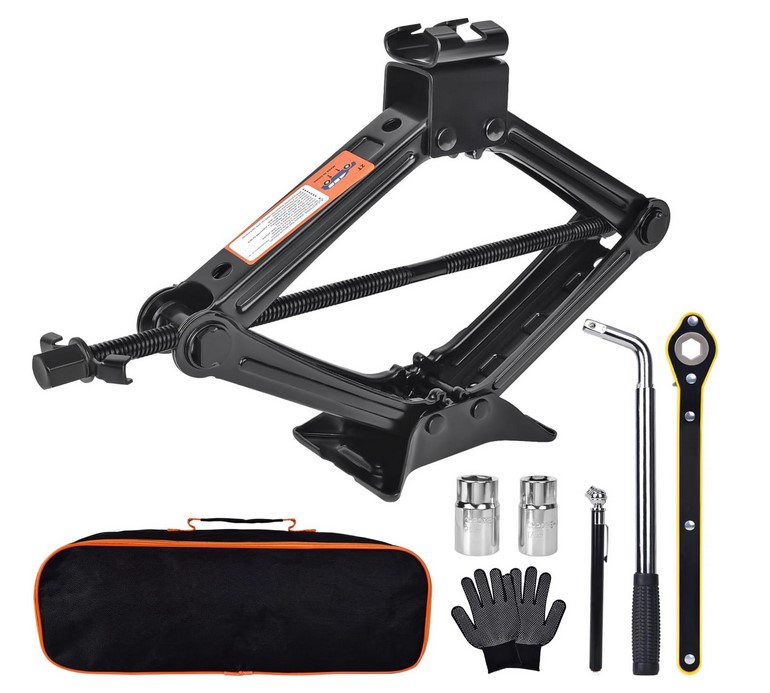
Essential Tire Changing Tools
Changing a flat tire requires a few essential tools to ensure the process is safe and efficient. Here are the key tools you’ll need:
Lug Wrench
A lug wrench, also known as a tire iron or wheel brace, is a specialized tool designed to loosen and tighten the lug nuts that secure the wheel to the vehicle. It typically has a long handle for leverage and a socket at the end that fits snugly over the lug nuts. Lug wrenches come in different sizes to accommodate various lug nut styles.
Jack
A jack is a mechanical device used to lift the vehicle off the ground, allowing you to remove the flat tire and replace it with the spare. There are several types of jacks, including scissor jacks, bottle jacks, and floor jacks. Most vehicles come equipped with a scissor jack, which is compact and easy to store in the trunk or cargo area.
Spare Tire
Having a spare tire is crucial when dealing with a flat. Spare tires can be full-size or temporary (also known as a donut or space-saver tire). While a full-size spare is preferable, a temporary spare can get you to a repair shop safely, but it should only be used for a limited distance and at reduced speeds.
Wheel Chocks
Wheel chocks are wedge-shaped blocks that help prevent the vehicle from rolling while it’s jacked up. They should be placed on both sides of the front tires (if changing a rear tire) or the rear tires (if changing a front tire) to provide additional stability and safety.
Gloves
Changing a tire can be a dirty job, and gloves can help protect your hands from grease, dirt, and potential cuts or scrapes. Sturdy work gloves or mechanics’ gloves are recommended.
Flashlight
If you find yourself changing a tire in low-light conditions, a flashlight can be invaluable. It will help you see the lug nuts, jack placement, and any potential obstacles or hazards around the vehicle.
Other Useful Tools
While not essential, there are a few other tools that can make the tire changing process easier, such as a tire gauge to check the air pressure in the spare tire, a tire repair kit for temporary fixes, and a reflective safety vest or warning triangles to increase visibility and alert other drivers.
Having the right tire changing tools on hand and knowing how to use them properly can help you handle a flat tire situation with confidence and safety.
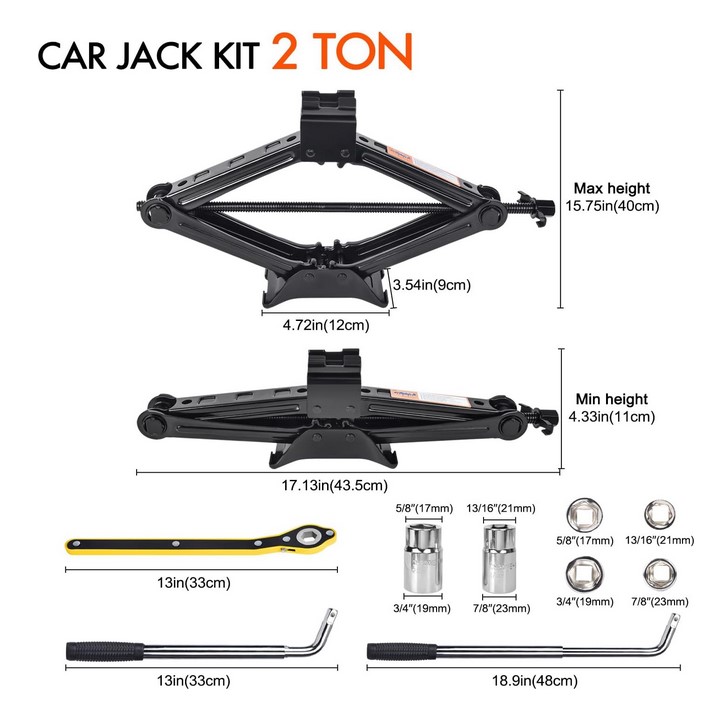
Types of Jacks
Jacks are essential tools for lifting vehicles off the ground during tire changes. Several types of jacks are available, each with its own advantages and disadvantages.
Scissor Jacks: Scissor jacks are compact and lightweight, making them a popular choice for inclusion in most vehicle tool kits. They consist of a series of scissor-like crossed metal plates that extend to lift the vehicle. While convenient and portable, scissor jacks have a relatively low lifting capacity and should only be used on level, solid surfaces.
Hydraulic Jacks: Hydraulic jacks use a hydraulic mechanism to lift vehicles. They are more powerful and stable than scissor jacks, with higher lifting capacities. However, hydraulic jacks are typically larger and heavier, making them less portable. They come in various sizes, from compact models for passenger cars to heavy-duty versions for trucks and SUVs.
Bottle Jacks: Bottle jacks are hydraulic jacks with a cylindrical body resembling a bottle. They are compact and can fit into tight spaces, making them useful for lifting vehicles with low ground clearance. Bottle jacks have a high lifting capacity but can be less stable than other jack types, so they should be used with caution and on a solid, level surface.
Floor Jacks: Floor jacks are low-profile hydraulic jacks designed for professional use in automotive shops and garages. They offer high lifting capacities and stability, making them suitable for lifting heavy vehicles. Floor jacks roll on casters or wheels, allowing for easy positioning under the vehicle. However, they are bulky and less portable than other jack types.
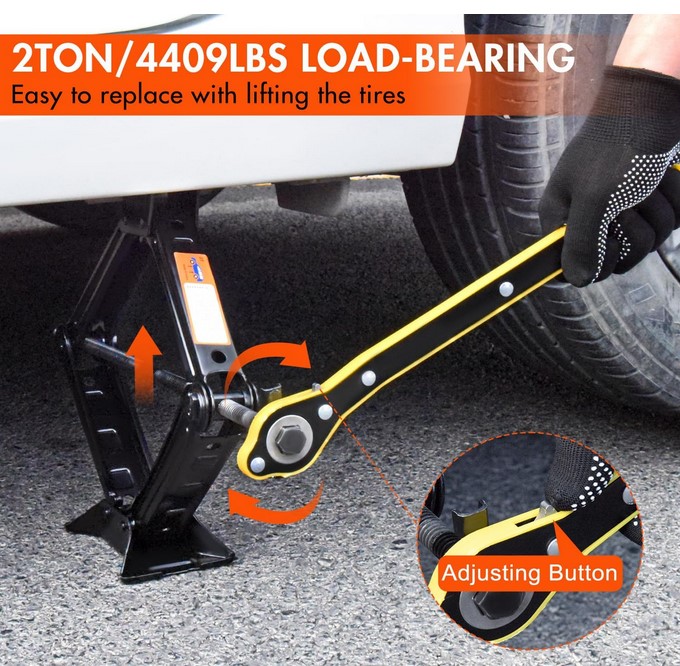
How to Use Tire Changing Tools
Changing a tire on the side of the road can be a daunting task, but with the right tools and knowledge, it can be done safely and efficiently. Here’s a step-by-step guide on how to use tire changing tools:
- Park on a Level Surface: Find a safe spot to pull over, preferably on a level surface away from traffic. Turn on your hazard lights and apply the parking brake.
- Retrieve the Tools: Locate your spare tire, jack, lug wrench, and any other tire changing tools in your vehicle. Make sure you have everything you need before starting.
- Loosen the Lug Nuts: Use the lug wrench to loosen the lug nuts on the flat tire. Turn them counterclockwise, but don’t remove them yet. This will make it easier to remove the tire once it’s off the ground.
- Position the Jack: Place the jack on a solid, level surface near the flat tire. Consult your vehicle’s owner’s manual for the proper jacking points.
- Raise the Vehicle: Operate the jack according to the manufacturer’s instructions to lift the vehicle until the flat tire is off the ground. Ensure the vehicle is stable and secure before proceeding.
- Remove the Lug Nuts and Tire: Once the tire is off the ground, fully remove the lug nuts and set them aside in a safe place. Then, carefully remove the flat tire.
- Mount the Spare Tire: Place the spare tire onto the lug bolts and hand-tighten the lug nuts in a crisscross pattern.
- Lower the Vehicle: Slowly lower the vehicle back to the ground by reversing the jack’s operation.
- Tighten the Lug Nuts: With the vehicle on the ground, use the lug wrench to tighten the lug nuts in a crisscross pattern. Apply firm pressure to ensure they are securely fastened.
- Stow the Tools and Flat Tire: Once the spare tire is properly installed, gather all the tools and the flat tire, and store them securely in your vehicle.
Remember, changing a tire can be dangerous if not done properly. If you’re unsure or feel unsafe, it’s always best to call for professional assistance. Additionally, be sure to have the spare tire replaced or repaired as soon as possible, as it’s only a temporary solution.
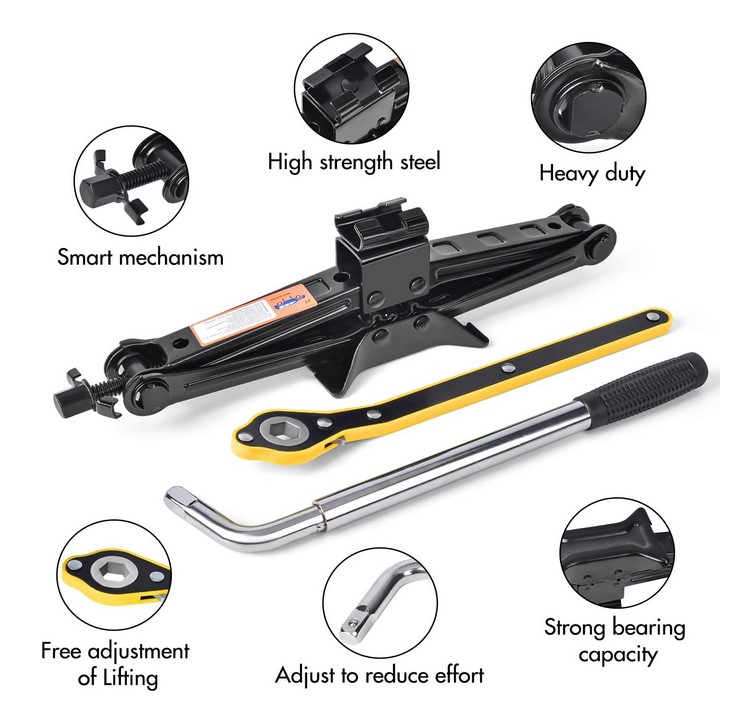
Safety Precautions
Changing a tire can be a dangerous task if proper safety precautions are not taken. Here are some essential safety measures to follow:
Parking on a Level Surface: Always park your vehicle on a level, firm surface when changing a tire. Avoid soft or uneven ground, as it can cause the jack to become unstable, leading to potential accidents or injuries.
Using Wheel Chocks: Wheel chocks are essential for preventing the vehicle from rolling while it’s raised on the jack. Place chocks on both sides of the front and rear tires diagonally opposite the flat tire to ensure maximum stability.
Warning Signals: If you’re changing a tire on the side of the road, it’s crucial to alert other drivers of your presence. Turn on your hazard lights and set up warning triangles or flares behind your vehicle to increase visibility and warn approaching traffic.
Proper Lighting: If you’re changing a tire in low-light conditions, ensure you have adequate lighting. Use a flashlight or portable work lights to illuminate the area around the tire, making it easier to see what you’re doing and reducing the risk of accidents.
Wearing Protective Gear: Consider wearing protective gear, such as gloves and safety glasses, to protect your hands and eyes from potential hazards like sharp objects or flying debris.
Avoiding Loose Clothing: Loose clothing or jewelry can get caught in the moving parts of the vehicle or the tire changing tools, increasing the risk of injury. Wear appropriate, close-fitting clothing and remove any loose jewelry before starting the tire change process.
Remember, safety should always be the top priority when changing a tire. Taking the necessary precautions can help prevent accidents and ensure a successful and safe tire change.
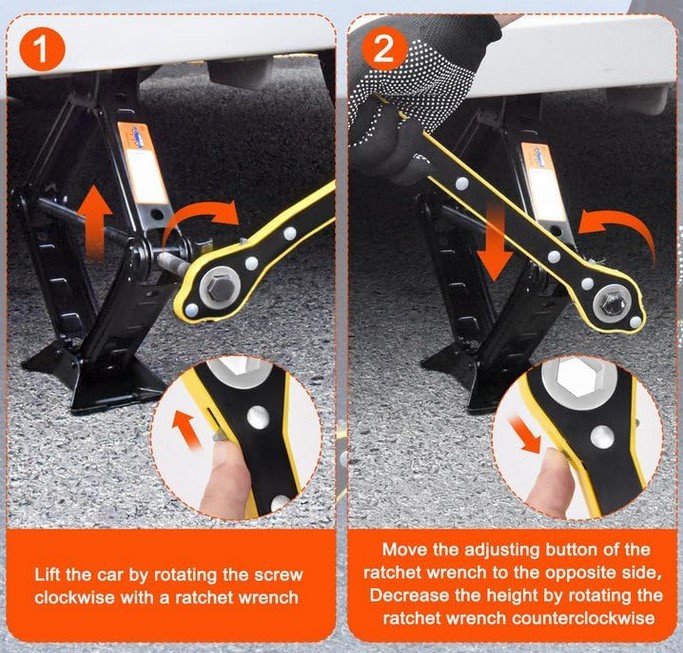
Maintenance and Storage
Proper maintenance and storage of tire changing tools are crucial to ensure their longevity and functionality. Regular inspection and cleaning can prevent rust, damage, and premature wear, ensuring the tools are ready for use when needed.
Checking and Maintaining Tools
- Inspect for Damage: Before and after each use, carefully inspect all tire changing tools for signs of wear, cracks, or damage. Look for bent or broken components, rust, and any other visible issues that could compromise the tool’s integrity and safety.
- Clean and Lubricate: After use, clean the tools thoroughly to remove any dirt, debris, or road grime. Use a wire brush or steel wool to remove stubborn rust or corrosion. Apply a light coating of lubricant to moving parts, such as the jack’s threads or lug wrench joints, to ensure smooth operation and prevent seizing.
- Tighten and Adjust: Check for loose nuts, bolts, or other fasteners, and tighten them as needed. Adjust any movable parts, like the jack’s release valve or the lug wrench’s socket, to ensure proper fit and function.
- Replace Worn Parts: If any components show excessive wear or damage, replace them immediately. Using worn or compromised tools can lead to accidents or further damage.
Proper Storage
- Dry Environment: Store tire changing tools in a dry, climate-controlled environment, such as a garage or shed. Moisture can lead to rust and corrosion, which can weaken the tools and make them unsafe to use.
- Protect from Dirt and Debris: Keep the tools clean and protected from dirt, dust, and other contaminants. Store them in a toolbox, cabinet, or other enclosed space to prevent exposure to the elements.
- Organize and Label: Organize the tools in a way that makes them easy to locate and identify. Label the storage area or containers to ensure quick access when needed.
- Avoid Extreme Temperatures: Extreme temperatures, whether hot or cold, can affect the integrity of the tools. Avoid storing them in direct sunlight or in areas with extreme temperature fluctuations.
By following these maintenance and storage practices, you can extend the life of your tire changing tools and ensure they are ready for use when needed, minimizing the risk of accidents or frustrations during a tire change.
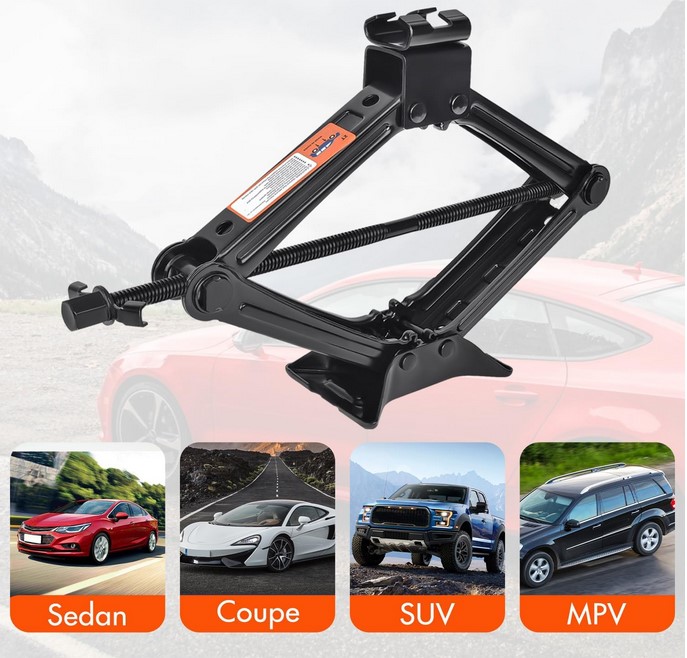
Tire Changing Kits
Tire changing kits are pre-assembled sets that include all the essential tools needed to change a flat tire on the go. These kits are designed to be compact, portable, and easy to store in your vehicle’s trunk or cargo area.
Contents of a Tire Changing Kit
A typical tire changing kit includes the following items:
- Lug wrench or socket: Used to loosen and tighten the lug nuts that secure the wheel to the vehicle.
- Jack: A device used to lift the vehicle off the ground, allowing you to remove and replace the flat tire.
- Jack handle: A long metal rod that fits into the jack and provides leverage for lifting the vehicle.
- Wheel chocks: Wedge-shaped blocks used to prevent the vehicle from rolling while it’s jacked up.
- Gloves: Protective gloves to keep your hands clean and provide a better grip while handling the tools and tire.
- Reflective safety triangles or flares: Placed behind the vehicle to warn other drivers of the roadside situation.
Some premium kits may also include additional tools like a tire pressure gauge, tire valve stem tool, or a small air compressor.
Advantages of Tire Changing Kits
Tire changing kits offer several advantages over purchasing individual tools:
- Convenience: All the necessary tools are conveniently packaged together, making it easy to grab the kit and go when you need to change a tire.
- Portability: The compact size and carrying case or bag make the kit easy to store and transport in your vehicle.
- Cost-effective: Purchasing a pre-assembled kit is often more cost-effective than buying each tool separately.
- Completeness: The kit ensures you have all the essential tools needed for the job, reducing the risk of being unprepared on the road.
Popular Tire Changing Kit Brands
Some popular and trusted brands for tire changing kits include:
- AAA (American Automobile Association)
- Cartman
- Powerbuilt
- Slime
- Michelin
- Craftsman
- Lisle
When choosing a tire changing kit, consider factors such as brand reputation, kit contents, durability, and ease of use. Additionally, ensure that the jack and tools are compatible with your vehicle’s specifications.
When to Call for Assistance
While having the right tire changing tools and knowing how to use them properly can help you handle many flat tire situations, there are certain circumstances where calling for professional assistance is the safer and more practical choice. Here are some situations where you should consider seeking help from a tow truck service or roadside assistance:
Unsafe Location: If you experience a flat tire on a busy highway, narrow shoulder, or any area that puts you at risk of being struck by passing vehicles, it’s best to call for help rather than attempting to change the tire yourself. Your safety should be the top priority.
Lack of Proper Tools or Knowledge: If you don’t have the necessary tire changing tools or lack the knowledge and experience to change a tire safely, it’s better to call for assistance than to risk damaging your vehicle or injuring yourself.
Difficult Tire Removal: In some cases, the lug nuts may be extremely tight or the tire may be stuck due to rust or corrosion. If you’re unable to remove the tire despite your best efforts, it’s time to call for professional help.
Damaged or Missing Spare Tire: If your spare tire is flat, missing, or damaged, you won’t be able to complete the tire change. In this situation, you’ll need to call for a tow truck or roadside assistance to transport your vehicle to a tire shop or repair facility.
Inclement Weather: Changing a tire in heavy rain, snow, or strong winds can be extremely challenging and dangerous. If the weather conditions make it unsafe to attempt a tire change, it’s best to call for assistance and wait in your vehicle until help arrives.
Lack of Physical Ability: Changing a tire can be physically demanding, especially if you have limited strength or mobility. If you don’t feel capable of safely lifting the tire and performing the necessary tasks, it’s wise to call for professional help.
Remember, your safety and well-being should always come first. If you have any doubts or concerns about your ability to change a tire safely, don’t hesitate to call for assistance. Professional tow truck operators and roadside assistance providers have the tools, equipment, and expertise to handle tire changes quickly and efficiently, minimizing the risks and ensuring your safety on the road.
Alternatives to Traditional Tire Changing Tools
While traditional tire changing tools like jacks, lug wrenches, and spare tires have been the go-to solution for decades, several alternatives have emerged in recent years to make the process more convenient and safer. Here are some popular alternatives to traditional tire changing tools:
Run-flat Tires
Run-flat tires, also known as extended mobility tires, are designed to allow you to drive a limited distance after a puncture or loss of air pressure. These tires have reinforced sidewalls that can support the weight of the vehicle, eliminating the need for a spare tire or tire changing tools. Run-flat tires provide peace of mind and can be a lifesaver in situations where changing a tire is not feasible or safe.
Tire Sealants
Tire sealants are liquid or aerosol-based products that can be injected into the tire through the valve stem to temporarily seal punctures caused by nails or small objects. These sealants can quickly seal the puncture, allowing you to reinflate the tire and continue driving until you can get it repaired or replaced. Tire sealants are a convenient and cost-effective solution for minor tire punctures.
Inflator Kits
Inflator kits, also known as tire inflation kits or air compressors, are portable devices that can be used to inflate a flat tire. These kits typically include a compact air compressor powered by the vehicle’s 12-volt outlet or a rechargeable battery. Inflator kits can be a useful alternative to traditional tire changing tools, especially for minor leaks or slow punctures, allowing you to reinflate the tire and drive to a nearby service station.
Mobile Tire Services
In many urban areas, mobile tire services have become increasingly popular. These services dispatch technicians to your location to repair or replace a flat tire on the spot. Mobile tire services can be a convenient and hassle-free solution, especially if you’re not comfortable changing a tire yourself or if you’re in an unsafe location. However, these services may come at an additional cost.
While these alternatives can be helpful in certain situations, it’s still essential to have a basic understanding of traditional tire changing tools and how to use them. Carrying a spare tire, jack, and lug wrench in your vehicle can provide peace of mind and ensure you’re prepared for unexpected flat tire situations, especially in remote areas or when mobile services are not readily available.

